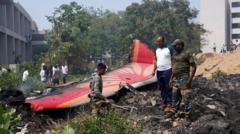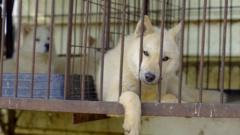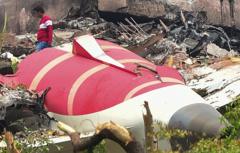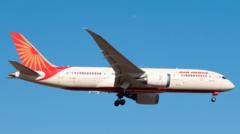In response to the December 2024 disaster that claimed 179 lives, the South Korean government is launching a comprehensive aviation safety initiative, including the introduction of drones.
South Korea Implements Drone Technology to Enhance Aviation Safety

South Korea Implements Drone Technology to Enhance Aviation Safety
Following a tragic air crash, South Korea is initiating drone deployment to reduce bird strikes at airports as part of broader safety measures.
South Korea has announced a groundbreaking aviation safety strategy that will see the deployment of drones at airports to combat bird strikes starting in the first half of 2026. This initiative follows the catastrophic crash of Jeju Air Flight 2216 in December 2024, which tragically resulted in the deaths of 179 passengers, prompting an urgent reassessment of aviation safety protocols nationwide.
The Muan International Airport, where the incident occurred, is situated next to wetlands attracting various bird species, leading to serious safety risks for flights. The government is not only investing in drone technology but also plans to enhance airport infrastructure at six major airports by the end of 2025, focusing on creating structures that are more resilient and less hazardous.
The crash, which was marked by a declared "Mayday" due to a reported bird strike, revealed that pilots had to perform a belly landing. Investigators have determined that this deadly event was exacerbated by the aircraft colliding with a concrete localizer antenna, which is intended to assist in landings. In light of this, the government has committed to replacing these rigid structures with more frangible designs that are safer on impact.
Further investigations revealed the presence of bird remains in the aircraft’s engines, raising concerns over the long-standing hazards posed by bird strikes. The Korea Airports Corporation had been previously alerted to this danger, yet significant actions were not taken to address these risks until after the tragedy.
The drones, set to be equipped with advanced capabilities to detect bird activity and deploy repellents, are intended to prevent future incidents before they can escalate. As a part of a phased approach, these technologies will eventually be available at all airports across the country by 2028, following extensive testing and refinement.
Experts in aviation safety advocate for innovative solutions such as drone technology to mitigate bird-related threats, highlighting its increasing adoption in global airport practices. This transformation marks a significant progress in South Korea's commitment to ensuring the safety of air travel and protecting the lives of passengers.
The Muan International Airport, where the incident occurred, is situated next to wetlands attracting various bird species, leading to serious safety risks for flights. The government is not only investing in drone technology but also plans to enhance airport infrastructure at six major airports by the end of 2025, focusing on creating structures that are more resilient and less hazardous.
The crash, which was marked by a declared "Mayday" due to a reported bird strike, revealed that pilots had to perform a belly landing. Investigators have determined that this deadly event was exacerbated by the aircraft colliding with a concrete localizer antenna, which is intended to assist in landings. In light of this, the government has committed to replacing these rigid structures with more frangible designs that are safer on impact.
Further investigations revealed the presence of bird remains in the aircraft’s engines, raising concerns over the long-standing hazards posed by bird strikes. The Korea Airports Corporation had been previously alerted to this danger, yet significant actions were not taken to address these risks until after the tragedy.
The drones, set to be equipped with advanced capabilities to detect bird activity and deploy repellents, are intended to prevent future incidents before they can escalate. As a part of a phased approach, these technologies will eventually be available at all airports across the country by 2028, following extensive testing and refinement.
Experts in aviation safety advocate for innovative solutions such as drone technology to mitigate bird-related threats, highlighting its increasing adoption in global airport practices. This transformation marks a significant progress in South Korea's commitment to ensuring the safety of air travel and protecting the lives of passengers.






















